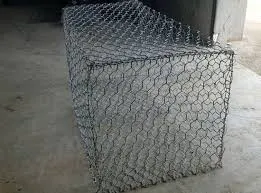
Oct . 18, 2024 23:30 Back to list
Choosing the Best Materials for Effective Field Fencing Solutions
Exploring Field Fencing Materials A Comprehensive Overview
Field fencing plays a critical role in agriculture and land management, serving primarily to keep livestock contained and protect crops from wildlife. The choice of fencing materials can significantly influence the durability, cost, and effectiveness of a barrier. In this article, we will explore various materials used in field fencing, their benefits, and considerations for selection.
1. Barbed Wire
Barbed wire is one of the most common and cost-effective fencing materials used in fields. Made from twisted strands of wire with sharp barbs at intervals, it deters animals from trying to cross the fence. Barbed wire is particularly effective for larger livestock such as cattle. Its affordability and easy installation make it a popular choice among farmers. However, its sharp edges can pose a risk, so caution is necessary, especially around children and pets.
2. Wire Fencing
Woven wire fencing, often made from high-tensile wire, provides a safe enclosure for livestock while allowing visibility and airflow. This type of fencing is crafted with vertical and horizontal wires, forming a grid that can effectively contain sheep, goats, and other smaller animals. Its strength and flexibility make it a reliable option, although installation may require more time and expertise compared to barbed wire.
3. Electric Fencing
field fencing materials

Electric fencing is a modern solution that uses electrical currents to deter animals from breaching the perimeter. This type of fencing can be highly effective as it can be used in conjunction with other materials or as a standalone solution. Electric fencing is particularly advantageous for containing animals that are prone to jumping or pushing against barriers. However, the initial setup cost can be higher, and regular maintenance is needed to ensure the system remains functional.
4. Vinyl Fencing
While less common in agricultural settings, vinyl fencing offers an attractive and durable alternative. Resistant to weather and wear, vinyl can provide a low-maintenance option for field fencing. It is not typically used for large livestock due to its lack of strength compared to traditional materials, but it can be an effective solution for decorative purposes or smaller animals. It is vital to consider the cost, as vinyl tends to be pricier than other options.
5. Wooden Fencing
Traditional wooden fences, such as post and rail designs, provide a natural aesthetic and sturdy enclosure. They are suitable for a variety of applications but require more maintenance compared to metal alternatives. Wood is prone to rot and insect damage, so choosing treated or durable wood species can enhance longevity.
In conclusion, selecting the best field fencing material depends on the specific needs of the landowner, including the type of livestock, budget, and aesthetic preferences. Whether opting for traditional barbed wire or modern electric fences, the right choice can ensure the safety and security of both animals and crops, contributing to a well-managed agricultural environment. Educating oneself about the characteristics of each material can lead to informed decisions, ultimately enhancing the efficiency and efficacy of field management practices.
-
Why a Chain Link Fence is the Right Choice
NewsJul.09,2025
-
Upgrade Your Fencing with High-Quality Coated Chicken Wire
NewsJul.09,2025
-
The Power of Fence Post Spikes
NewsJul.09,2025
-
The Best Pet Enclosures for Every Need
NewsJul.09,2025
-
Secure Your Property with Premium Barbed Wire Solutions
NewsJul.09,2025
-
Enhance Your Construction Projects with Quality Gabion Boxes
NewsJul.09,2025
Products categories











